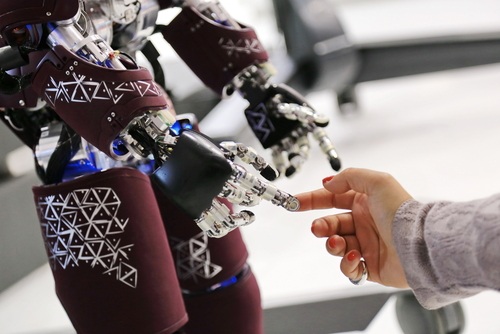Key Takeaways
- Ohio Representative Thad Claggett introduced House Bill 469 to ban AI personhood.
- The bill stops AI from owning property, holding management roles, facing criminal charges, or marrying humans.
- Supporters say it keeps laws focused on people, while critics worry it could slow AI progress.
- If it passes, Ohio’s move could inspire similar laws across the country.
AI Personhood Ban: Overview of House Bill 469
Ohio has stepped into the growing debate about artificial intelligence. Representative Thad Claggett’s House Bill 469 sets a clear rule. It declares that AI can never become a legal person. Therefore, AI systems would not own land, run companies, or even marry people. Moreover, the bill says AI cannot face criminal punishment. Clearly, lawmakers want to keep humans at the center of the legal system.
Details of the AI Personhood Ban
House Bill 469 lists specific rules to enforce the AI personhood ban. First, it prevents AI from owning property. As a result, no robot or software can buy a house or a car. Next, the bill bans AI from taking roles like director or officer in a company. This way, critical decisions remain in human hands. Furthermore, the legislation stops AI from being held criminally liable. In other words, machines cannot go to court or serve jail time. Finally, it makes marriage strictly human. So, no computer can legally wed a person.
Why the AI Personhood Ban Matters
In recent years, AI has made huge leaps. For example, machines now write articles, drive cars, and even compose music. As these tools grow smarter, people wonder where to draw the line. The AI personhood ban aims to answer that question. By refusing legal status, Ohio signals that laws apply only to people and organizations made up of people. Therefore, responsibilities and rights stay clear.
On one hand, supporters argue that granting personhood to AI could blur legal lines. They worry about who pays damages if an AI makes a wrong turn or a wrong decision. On the other hand, critics say strict bans might slow down tech innovation. They worry that too many limits could push AI research away from Ohio. Thus, the debate touches both ethics and economics.
Debates Around the AI Personhood Ban
Those who back the bill say it protects citizens. They describe scenarios where AI might exploit legal loopholes. However, opponents point out that AI often works under human control. In many cases, a company or developer calls the shots. They argue that laws could instead clarify human accountability. This approach would punish the real person behind any harm.
Moreover, some experts worry the ban is too broad. For instance, what if an AI program needs to own data rights? The bill might block useful innovations in medicine, law, or science. Therefore, striking a balance between safety and growth remains challenging. Meanwhile, tech firms and advocacy groups plan to lobby lawmakers before the bill moves forward.
What Comes Next for the AI Personhood Ban
House Bill 469 must pass through several votes. First, lawmakers will review the details in committee sessions. During these meetings, experts will testify for or against the proposal. Next, the full Ohio House will debate the bill. Afterward, it goes to the state Senate for more discussion. Finally, the governor can sign or veto the law. This process may take months or even longer. All the while, other states watch closely. If Ohio’s AI personhood ban succeeds, it could spark similar bills across the nation.
Potential Impact Beyond Ohio
If Ohio leads the way, other states might follow its example. Lawmakers in different regions face similar questions about AI rights. As a result, a patchwork of state laws could emerge. Companies could then choose where to set up shop based on local rules. Therefore, Ohio’s stance on the AI personhood ban may shape national policy.
However, some believe a federal law would make more sense. A single national standard could simplify things for businesses and courts. Yet achieving federal consensus on AI rules remains tough. States often move faster than Congress on hot issues. Thus, Ohio’s choice could steer the national dialogue on AI personhood.
Balancing Innovation and Protection
Clearly, AI brings both promise and risk. It can speed up tasks, uncover hidden patterns, and offer new services. At the same time, it poses ethical questions about privacy, bias, and responsibility. The AI personhood ban reflects a precautionary stance. Lawmakers want to avoid unintended consequences. Nevertheless, they also must consider Ohio’s tech economy. Striking the right balance will challenge legislators, businesses, and citizens alike.
Conclusion
Ohio’s House Bill 469 introduces a bold idea: no legal status for AI. The proposed AI personhood ban would bar machines from owning assets, holding leadership roles, facing criminal charges, or marrying humans. Supporters hope it preserves clear laws centered on people. Critics fear it may hamper innovation and create legal uncertainties. As the bill moves through the legislature, its fate could influence AI policy nationwide. Either way, Ohio’s debate highlights an urgent question: how do we govern intelligence that isn’t human?
FAQs
What is an AI personhood ban?
An AI personhood ban means machines cannot gain legal rights or responsibilities that people have. They cannot own assets, run companies, face criminal charges, or marry.
Why does House Bill 469 aim to ban AI personhood?
The bill’s sponsors believe that laws should focus on humans. They worry AI could exploit legal gaps if given personhood.
Could the AI personhood ban affect businesses?
Yes. Companies using AI might face limits on how they deploy or register their systems. This could alter investment and research plans.
Will other states copy Ohio’s AI personhood ban?
If the bill passes, other states may introduce similar measures. Ohio’s move could set a strong example for AI rules nationwide.

